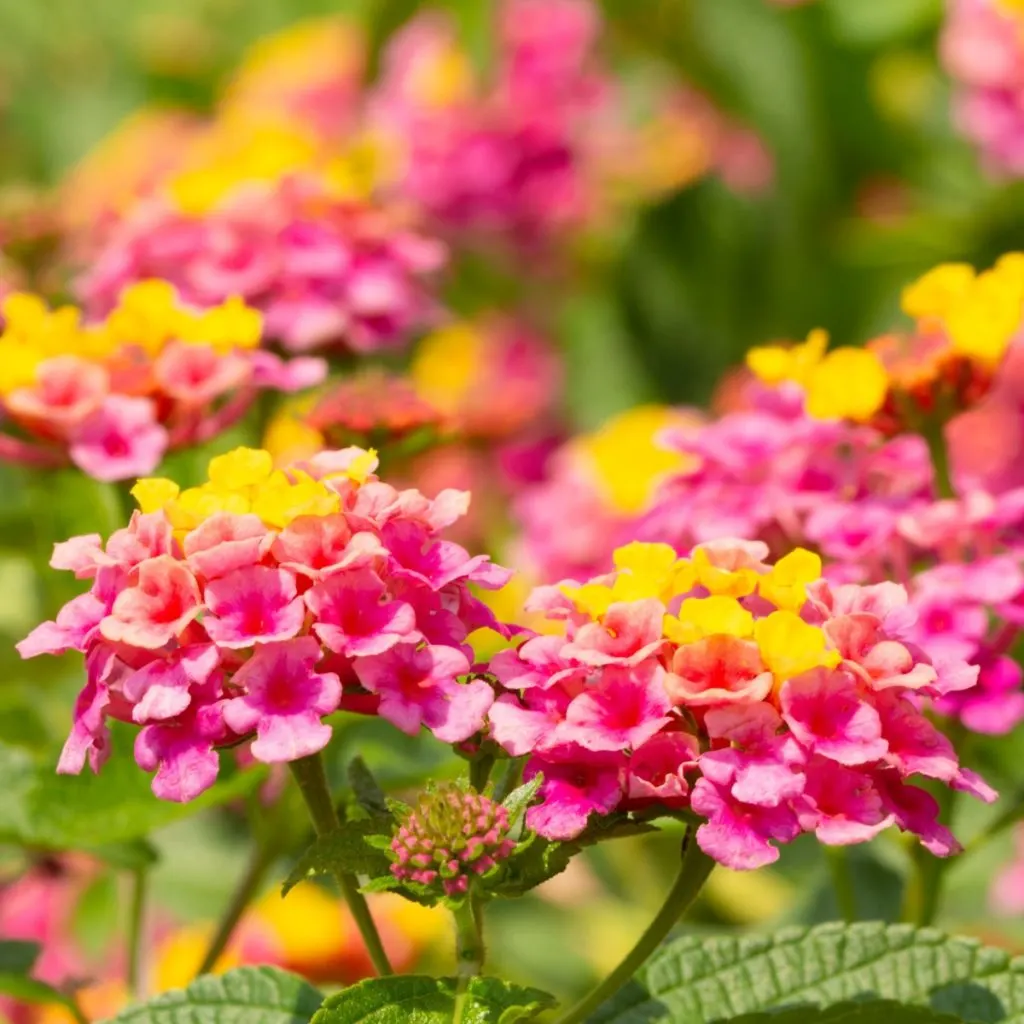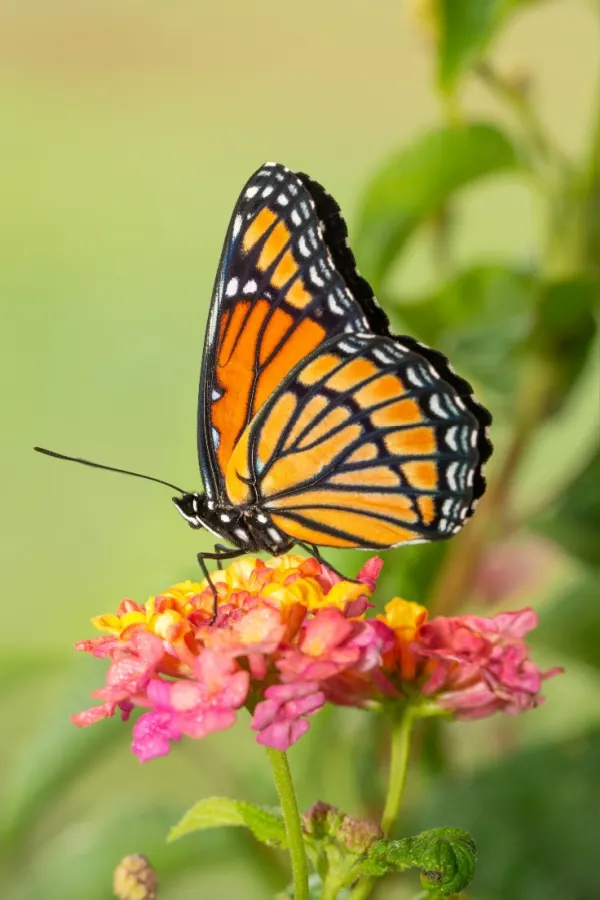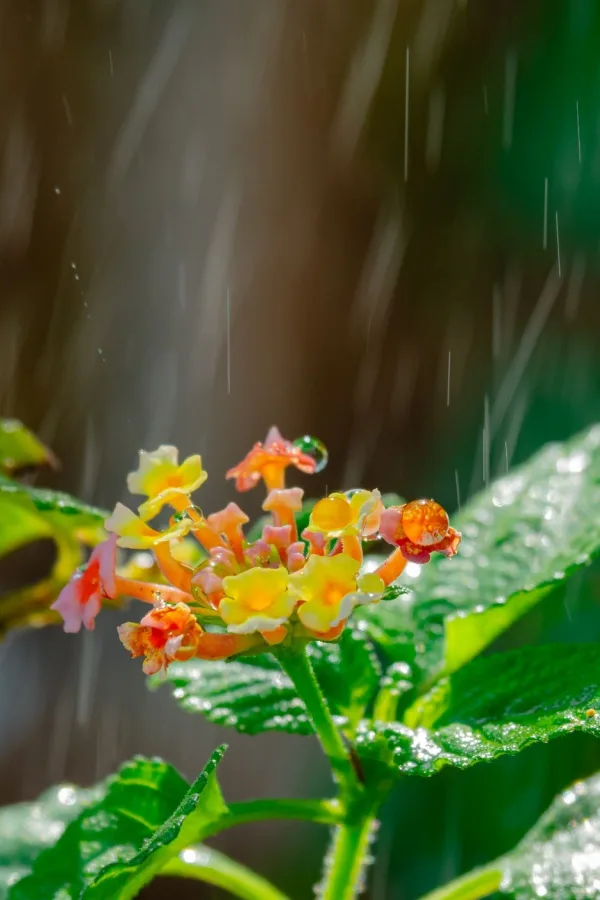Lantana are one of the most beautiful flowering plants to grace the late summer / early fall landscape – especially when you can keep them blooming big and strong!
With their multiple clusters of tiny vibrant blooms, lantana add interest and color to all kinds of garden spaces, flowerbeds and even pots and containers. Their unique blooms come in bright and pale shades of red, fuchsia, pink, lavender, orange, yellow, and white.
Not only are their flowers attractive, but they are also perfect for attracting bees, butterflies, and even hummingbirds. Lantana is also one of the most hardy flowering plants around, growing in about any soil conditions and handling drought, harsh sunlight, and whatever else summer can bring along.

Really making this flower stand out is its ability to bloom later in the season, when many other annuals and perennials start to slow down on flower production. Which is exactly why keeping your lantana flowering strong is vital to keeping big color in your landscape!
The good news is that lantana is an extremely low-maintenance plant. In fact, they are so low maintenance that when they do struggle to bloom – it’s usually from getting too much attention! With that said, they can still benefit from a few simple tasks that can keep them blooming strong all through the summer and into late fall.
How To Keep Lantana Blooming In Late Summer – 3 Secrets To More Blooms!
To get the most out of your lantana plants, it’s best to first know the conditions they thrive in. Lantana performs best in warm, sunny locations. They can easily be grown in flowerbeds, raised beds, or directly in the ground as long as they get plenty of light. See our article “The Secrets To Growing Lantana”
While lantana will grow in almost any soil, they do best if that soil is well-draining. This helps to avoid having wet, soggy roots and prevents a whole host of other issues from occurring. When they suffer blooming issues, it is often from too much water instead of not enough.
Lantana can be grown as either a perennial or annual depending on your location. In climates with warm winters, lantana can be grown all year round as either bush or vining varieties.

In colder climates, lantana is typically grown as an annual. Once temperatures start to reach around 50º Fahrenheit, plants need to either be covered or brought indoors. Until then, the plants can continue to produce blooms up until the first frost – as long as a few simple care items are taken care of.
3 Simple Secrets To Keep Lantana Blooming Strong
#1 Removing Spent Flowers
One of the best ways to keep lantana blooming is to deadhead spent flowers. Deadheading is the simple process of cutting off and removing blooms that are starting to fade and die.
Once the blooms start to fade, they turn into seed clusters. These seed clusters not only use up precious energy and resources from the plant, but they also signal the plant to stop producing new blooms.
When you remove those spent blooms and seed heads, lantana can focus its energy back on producing brand-new blooms. Not only that, but it keeps plants looking tidier and more healthy too!
To deadhead, look for bloom clusters that are starting to darken. Some of the petals might even be falling off. Take a pair of small pruners and cut back the bloom stem to where it meets the rest of the plant. Product Link: Fiskars Micro-Tip Pruning Shears
Deadhead blooms as soon as they begin to die back because they will quickly start to form seed heads. Just be careful not to cut off the small buds forming underneath.

#2 Fertilizing – How To Keep Lantana Blooming In Late Summer
Even though lantana produced loads of bright blooms, the plants aren’t really heavy feeders. In fact, over-fertilizing plants can be more of an issue with lantana that under fertilizing. Too much energy will cause the plants to focus their energy on producing full foliage as opposed to creating new blooms.
However, lantana can still benefit from a low and steady supply of nutrients. The key is to use a light dose of fertilizer just once a month.
Choose an all-purpose, granular fertilizer to help plants receive a continual dose of nutrients throughout the month. Give plants half the recommended dose and apply it every 30 days for a steady supply of energy.
Work the granules into the soil around the base of each plant. Unlike liquid fertilizers that provide a quick dose of nutrients immediately, granular fertilizers will slowly leech out nutrients every time you water plants or it rains.
#3 Proper Watering – How To Keep Lantana Blooming In Late Summer
The third and final key is watering your lantana for success. Unlike most summer flowering plants like petunias or impatiens, lantana will struggle more with overwatering as opposed to underwatering.

Overly saturated soil causes lantana roots to rot. It can also make the plant far more susceptible to disease and pests. Avoid watering lantana plants on a daily schedule. Instead, allow the soil to dry out in between waterings. It’s always better to water plants deeply a few times a week as opposed to light waterings every day.
When watering, avoid watering plants overhead. The tiny individual blooms of lantana plants are rather fragile. A strong stream of water can easily knock off the blooms and harm the delicate stems.
Instead, water plants at the base if possible. Use a soil moisture meter to help you avoid overwatering, never letting the moisture get above 50%. You will need to water lantana in pots more often than those that grow directly in the ground.
By providing your lantana with proper water, just a bit of fertilizer, and deadheading spent blooms, you can enjoy their vivid flower clusters all throughout the summer months and long into fall!
Simple Garden Life
Follow Our Facebook Page For Even More Great Tips! Simple Garden Life Facebook Page
Simple Garden Life is a website dedicated to keeping gardening fun, simple and enjoyable! We publish two new articles each week along with a new garden podcast episode every two weeks. This article may contain affiliate links.
